Timbre is the very essence of all sound.
The unique fingerprint distinguishes one musical note from another, even if they’re played at the same pitch and volume.
And while it might be seamlessly integrated into every piece of music we hear, if you’re unfamiliar with its intricacies, you’ll never be able to use its full potential.
As a music producer, harnessing the power of timbre is crucial in order to create distinctive, evocative, and show-stopping tracks.
This is why we’re delving deep into the world of timbre 一 breaking down its every nuance so you can use it to your advantage.
In today’s article, we’ll be covering:
- The definition of timbre (timbre meaning) ✓
- Timbre in digital music production ✓
- Different frequencies & different musical instruments ✓
- The art of shaping tone quality ✓
- The timbre spectrum ✓
- Overtones, harmonics, and tone color ✓
- Voice & emotional timbre ✓
- How to manipulate timbre in DAWs ✓
- Professional Timbre tricks, tips, techniques & secrets ✓
- The balance between melody, tone, and timbre ✓
By the end of this guide, you’ll know everything needed to understand and successfully manipulate timbre in your songs.
You’ll be able to create tracks that are not only technically sound but also emotionally resonant.
This will help your tracks shine and get the recognition they deserve.
So, let’s dive in…
Table of Contents
What is Timbre? (Timbre Meaning)
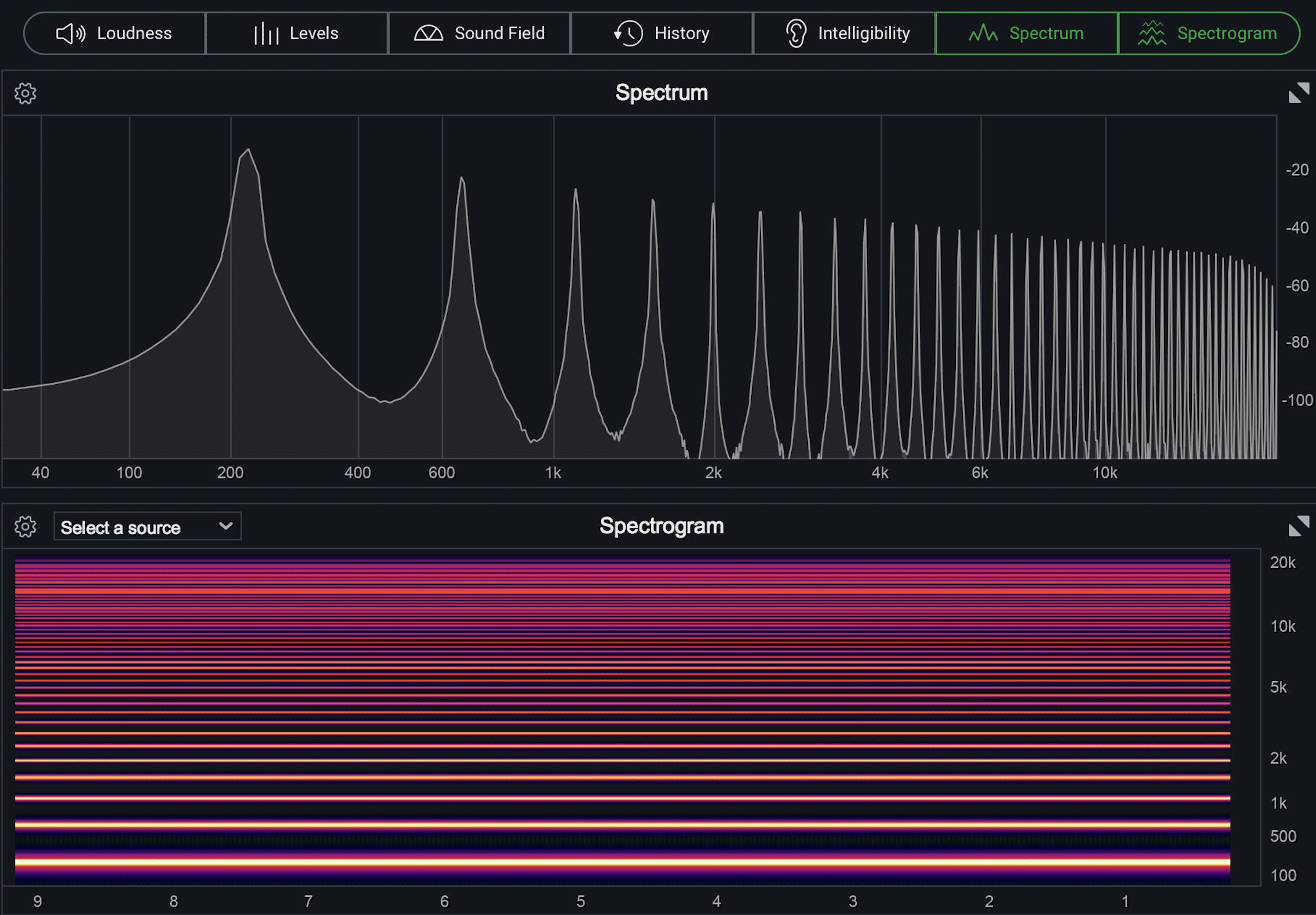
When you hear a note, several elements come together, and timbre (pronounced “tam-ber”) is that unique quality that lets you differentiate the source of one sound from another.
Yes, even if they’re playing the same note.
Let’s say a grand piano and a steel-stringed guitar both play the middle C note…
While the pitch is consistent between them, certain timbral elements of that note differ significantly, like the:
- Resonance
- Character
- Feeling
It’s similar to the same color painted on two different textures; the hue might be consistent, but the visual experience isn’t.
Every musical instrument, voice, or sound-producing entity has a physical mechanism producing its sound.
For a guitar, it’s the plucked strings and the resonance within its body 一 for a drum, it’s the stretched membrane being struck.
These mechanisms produce sound waves with unique patterns, leading to different and unique timbres.
Timbre also holds emotional content.
In fact, the term ‘timbre’ originates in the Middle French (old French) word for ‘bell,’ hinting at the concept of a unique sound characteristic.
A deep, rich cello might convey sadness or introspection, whereas a bright, chirpy flute could invoke joy or lightness.
This emotional richness makes timbre essential for musicians, artists, and producers to evoke specific feelings and vibes.
NOTE: Words like warm, bright, brassy, resonant, sharp, and mellow are often used to describe timbre.
These descriptors communicate the technical aspects of sound and the emotional content.
The Essence of Timbre in Music (Musical Timbre)
Diving deeper, let’s unpack the multifaceted world of timbre, exploring its definitions, role in shaping tonal quality, and interaction with various musical instruments.
-
The Role of Timbre in Shaping Tone Quality
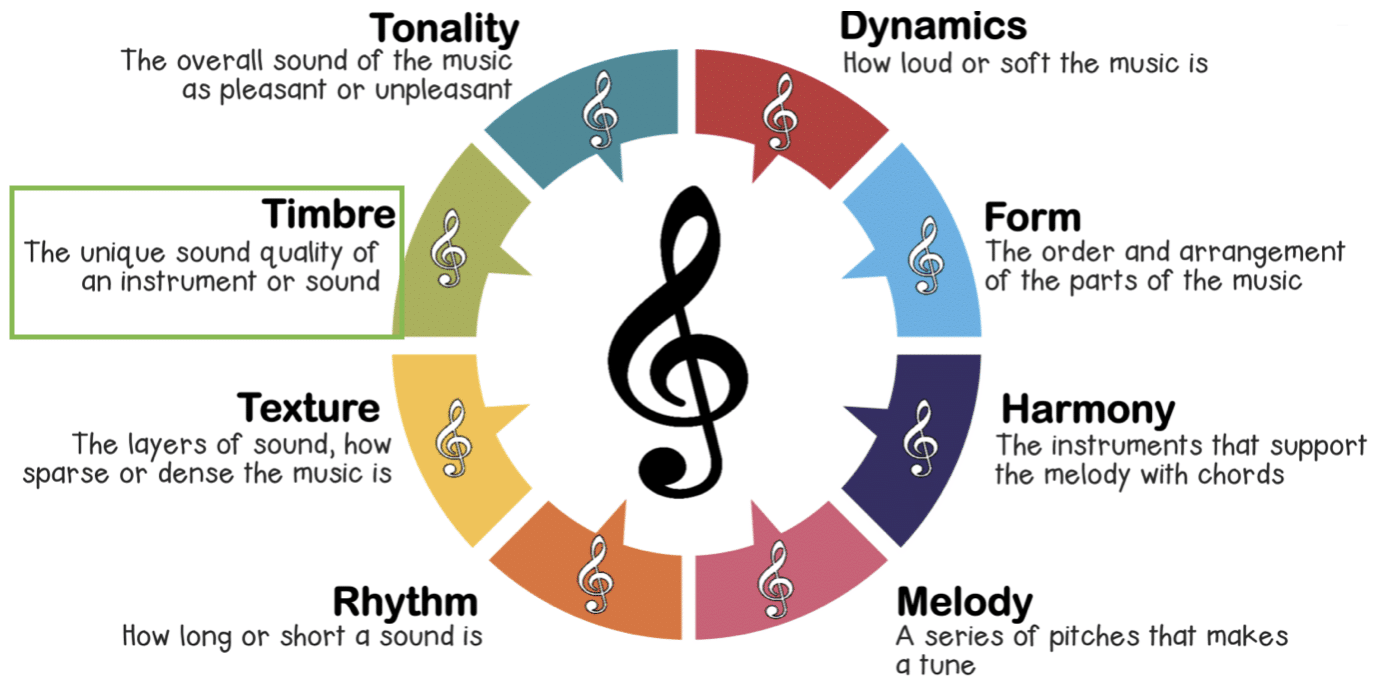
In digital music production, where sounds can be synthesized and manipulated extensively, timbre is instrumental in determining the overall tone quality.
Timbre enables listeners to classify two sounds into the same category, even if they differ in pitch or loudness.
Unlike traditional music (where the tone quality of a musical instrument is largely fixed), digital platforms allow for the modification of an instrument’s intrinsic timbre.
By adjusting parameters in synthesizers or effects, you can make a digitally created violin sound warm and mellow or sharp and edgy, all at the click of a mouse.
Digital producers like myself often layer multiple sounds to create depth (which is most likely heard in your favorite songs).
Each layer has its musical timbre, and the interaction of these timbres determines the composite tone quality.
For instance, layering a synthetic pad sound with a human voice can produce a haunting, ethereal tone.
Timbre can be dynamically altered throughout a track.
Certain effects can morph the timbre of a sound as the track progresses, like:
- Automated filters
- Modulators
- Audio effects
These factors help to add evolving textures and keep the listeners engaged.
Modern digital audio workstations offer many virtual instruments 一 each attempting to replicate the timbre of its real-world counterpart.
However, the tone quality can sometimes be a giveaway of digital origins.
Mastering these tools is essential to achieving the desired tone qualities in your tracks.
-
Impact of Different Instruments on Timbre

In the digital realm, the lines between different instruments blur.
Synthesizers can recreate the sounds of many instruments, but understanding their acoustic origins can greatly aid in digital manipulation.
When a digital synthesizer mimics a piano or a trumpet, it’s trying to recreate the specific set of overtones and harmonics associated with those different instruments.
Recognizing these spectral patterns helps in tweaking or hybridizing sounds.
You can emphasize or de-emphasize specific overtones 一 effectively changing the instrument’s perceived timbre.
This flexibility allows for the creation of fresh, never-before-heard timbres.
NOTE: Digital effects like distortion or bit-crushing can introduce new harmonics.
Therefore, understanding how these effects alter the harmonic content is key to using them effectively and musically.
As I’m sure you know, sampling is a staple in digital production.
Taking short snippets of real-world sounds (like a violin pluck, piano, or drum hit) and manipulating their timbre opens up a world of creative possibilities.
This can be done by altering their spectral content or processing them through effects.
The Anatomy of Timbre
Timbre isn’t just a singular aspect; it’s a combination of multiple sonic elements.
To fully appreciate its depth, we must delve into its various components and understand how they collectively contribute to the overall sound.
-
Fundamental Frequency & Different Frequencies
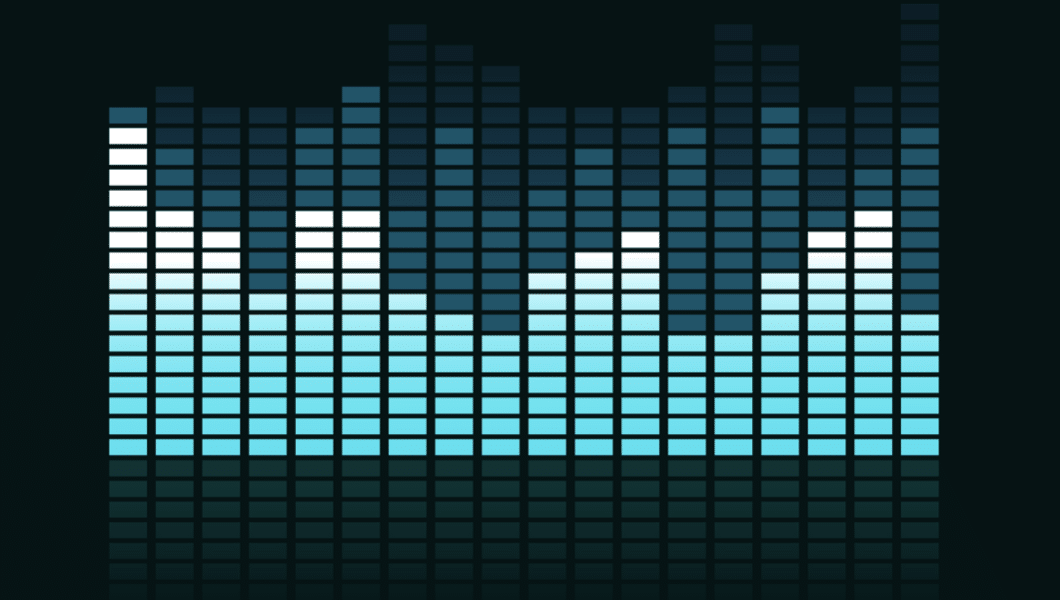
At the heart of every musical sound lies its fundamental frequency.
This frequency is the lowest and usually the most dominant one that defines the perceived pitch of a sound.
If you pluck a guitar string (or other string instruments) and it resonates at 440 Hz, that’s its fundamental frequency.
But there’s more to the sound than meets the ear…
Every sound contains a myriad of frequencies beyond the fundamental.
These different frequencies overlay and combine with the Fundamental to create the complex soundscapes we hear.
When you play a note on a digital synthesizer, even if tuned to that same 440 Hz, it won’t sound the same as the guitar.
This is due to:
- The collection of different frequencies
- Their intensity
- How they interact with other instruments and sound sources
In digital music production, this understanding is paramount.
By manipulating the balance and presence of these different frequencies relative to the fundamental, you can drastically change the timbre.
For example, a digital pad sound might have a strong fundamental frequency, giving it a defined pitch, but it can shimmer and sparkle with added higher frequencies.
This frequency change can result in a richer auditory experience.
The role of the fundamental frequency in timbre cannot be overstated, as it sets the stage for all other frequencies to spring forth.
However, the interaction between the fundamental frequency and these different frequencies crafts the unique timbre of every sound.
This understanding will help you to carve out your signature sounds.
-
Overtones, Harmonics, and Tone Color in Timbre
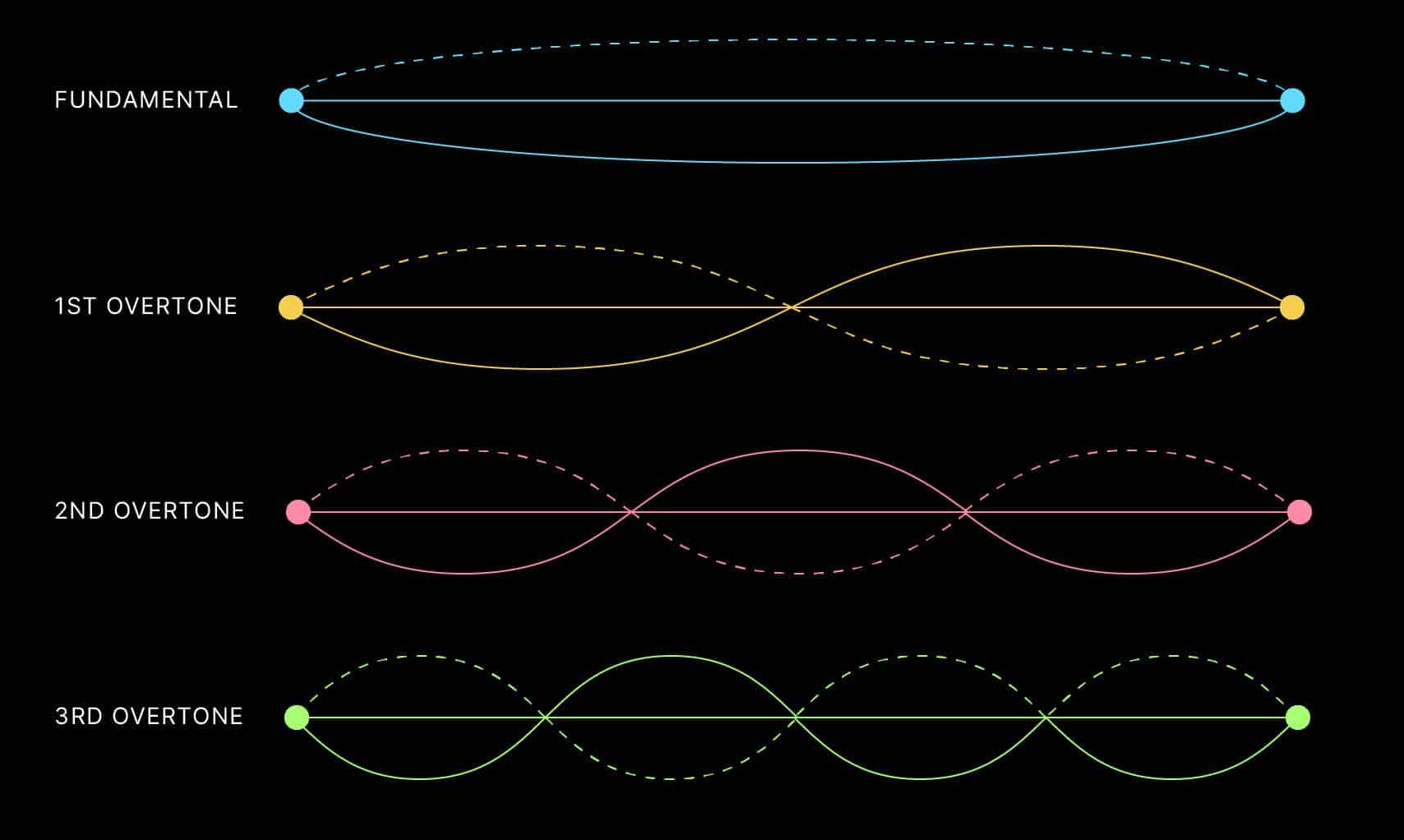
To master the intricacies of timbre, it’s crucial first to understand overtones and harmonics.
Every sound we perceive is not just a singular tone but a complex mix of a fundamental frequency and additional frequencies layered on top.
Overtones are those additional frequencies.
The first frequency (or the primary note you hear) is the fundamental frequency, which we just upon.
Every frequency after that is an overtone, and specific overtones are called harmonics.
Harmonics, which are whole number multiples of the fundamental frequency, are integral to shaping the timbre of a sound.
For instance, if you have a fundamental frequency of 100 Hz, the first harmonic would be 200 Hz, the second at 300 Hz, etc.
In digital music, these harmonics can be accentuated or diminished using synthesizers and equalizers to shape the sound to your desired tone quality.
Think of a synth bass sound with a gritty edge to it 一 this edge is often a result of boosting certain harmonics.
Tone Color dives into the qualitative aspect of sound.
It makes a guitar sound warm or a digital synth sound cold and metallic.
NOTE: The terms ‘timbre’ and ‘tone color’ are words interchangeably used in the music world.
The intricate blend of overtones and harmonics produces this unique coloration to the sound.
For example, in a trap beat, you might want:
- A snare that has a sharp & bright tone color, emphasized by higher overtones.
- A bass with a darker tone color by focusing on the lower harmonics.
The world of overtones, harmonics, and tone colour is vast.
Mastering them allows you to sculpt unique and compelling sounds, making your songs resonate completely differently.
From Pitch to Tone: The Timbre Spectrum
Understanding the transition from pitch to tone in timbre is essential for every digital music producer, so let’s get into it.
-
Pitch
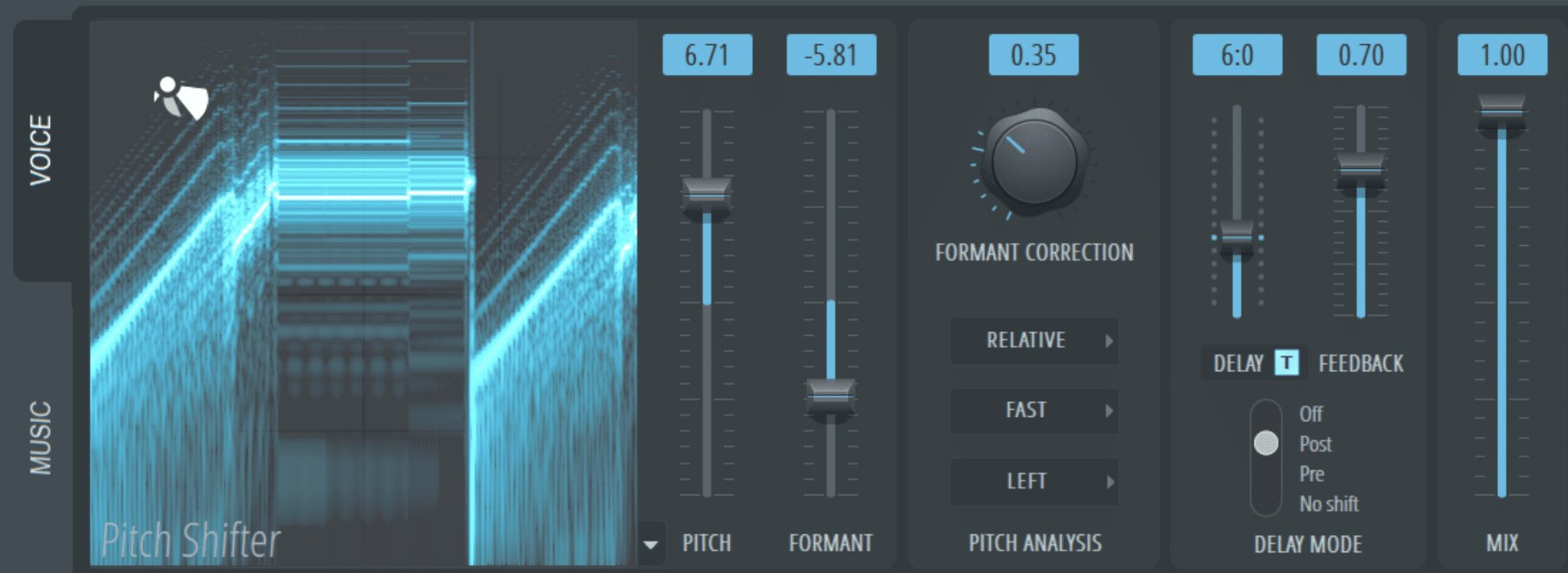
At its core, pitch refers to the frequency of a sound; the highness or lowness we perceive.
A quick example would be pressing two different keys on a keyboard ─ one produces a high pitch, and the other a low pitch.
In digital terms, when you adjust the pitch in your DAW, you change the frequency at which a sound wave oscillates.
-
Tone
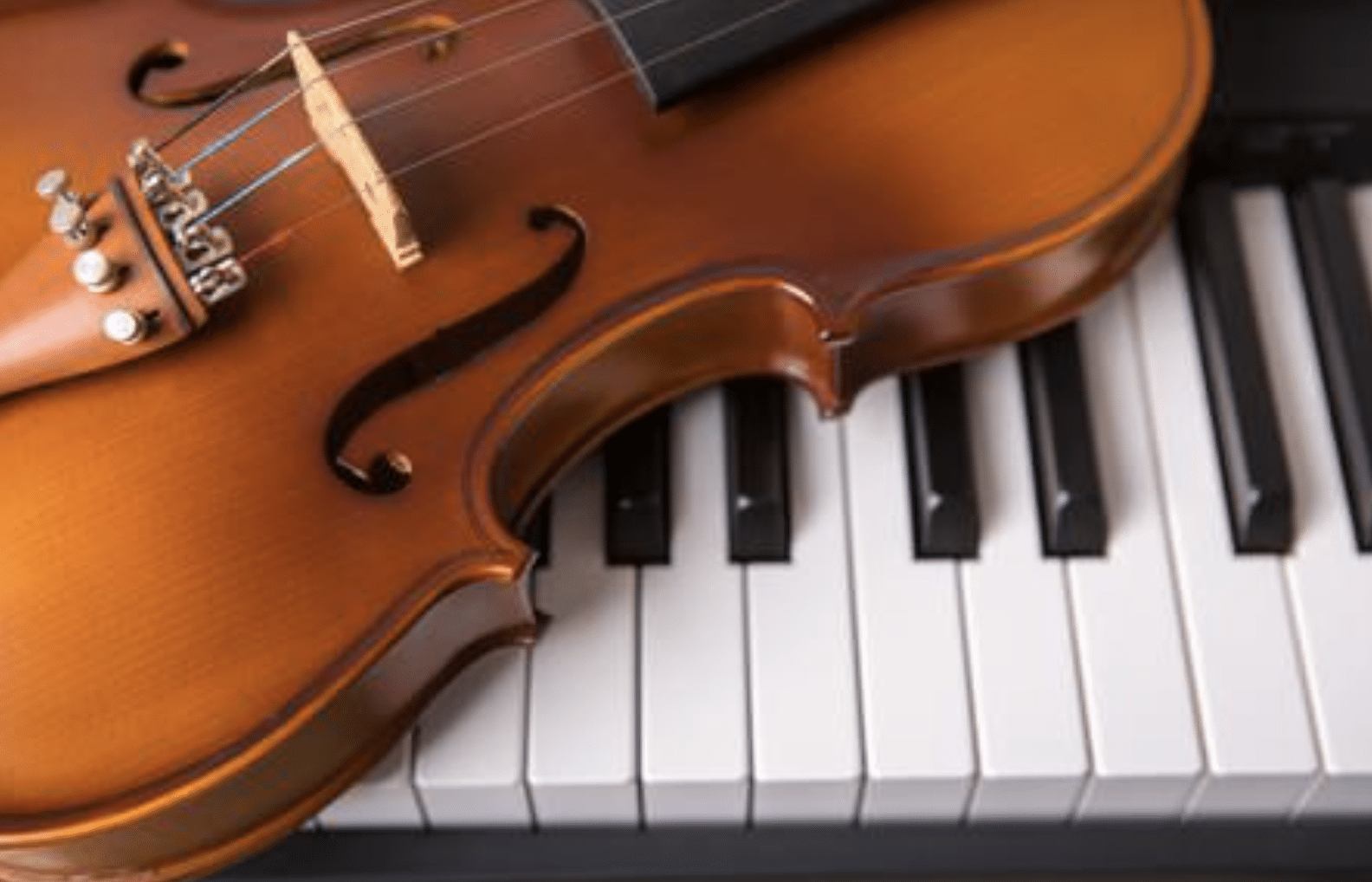
Tone encompasses not just the pitch but also the overall quality of the sound.
Think of a single note played on a piano and then on a violin ─ both might have the same pitch, but they sound different.
This distinction arises from the unique combination of overtones, harmonics, and other particular sound attributes.
In digital music, you can achieve the desired tonal quality by:
- Blending different sounds
- Adding audio effects
- Manipulating waveforms
Once you master these functions, you’ll be able to add additional flavor and color.
In turn, your music will be more intriguing and encourage your listeners to keep hitting that repeat button.
-
Timbre Spectrum
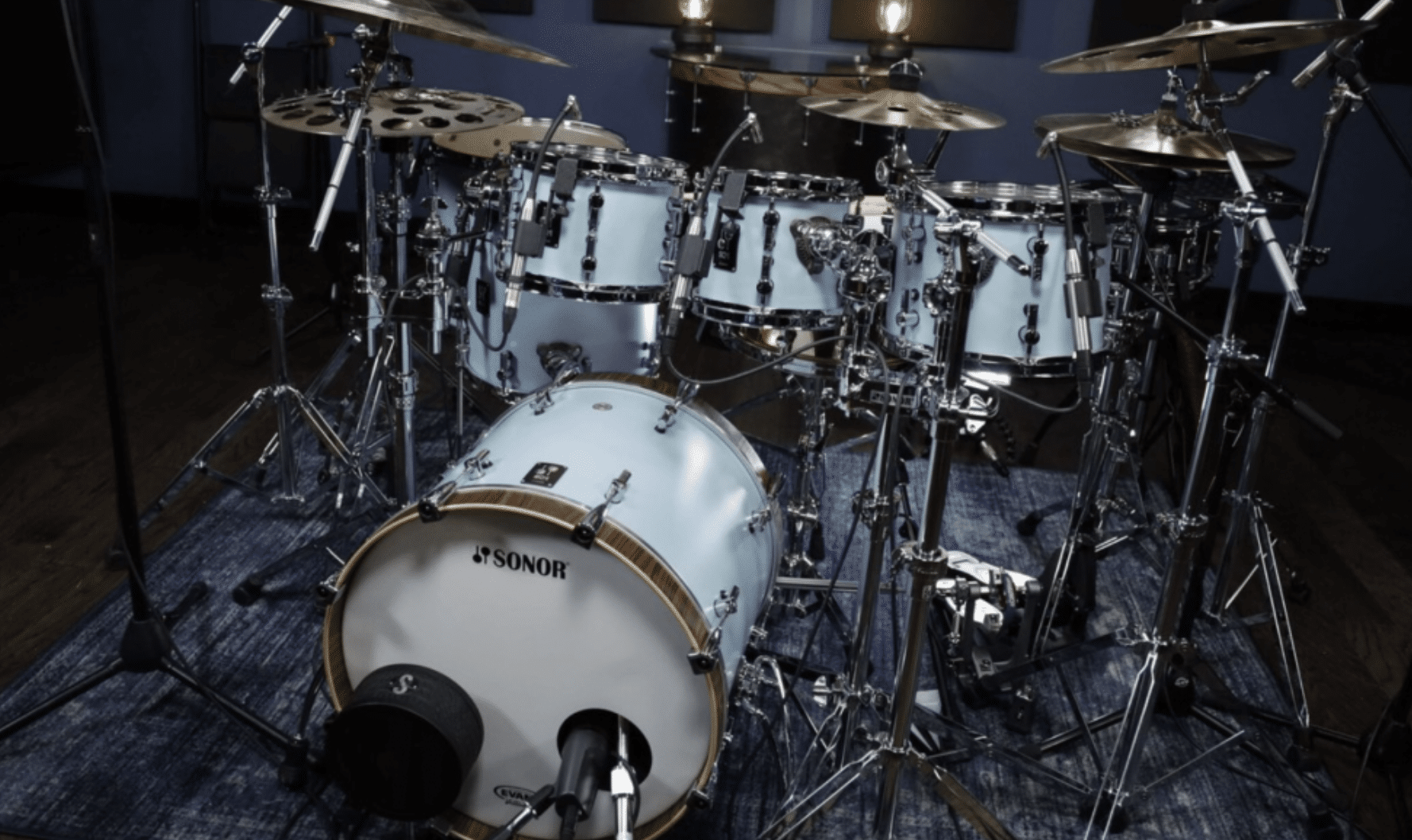
This is the full palette of sound qualities available for a note beyond just its pitch.
Timbre isn’t just about identifying a sound ─ it’s about experiencing its richness, depth, and complexity.
For instance, the timbre of a kick drum can make or break the track when producing trap or hip-hop beats.
Two kicks with the same pitch can have very different timbres.
One might feel deep and resonant, while the other might have a different timbre that sounds punchy/tight.
These variations come from differences in their timbre spectra (light timbre, dark timbre), shaped by their harmonics, overtones, and the balance of frequencies.
NOTE: Tools like EQs, filters, and synthesizers allow you to play across this spectrum, creating unique soundscapes.
Voice & Timbre: The Uniqueness of Your Singing Voice
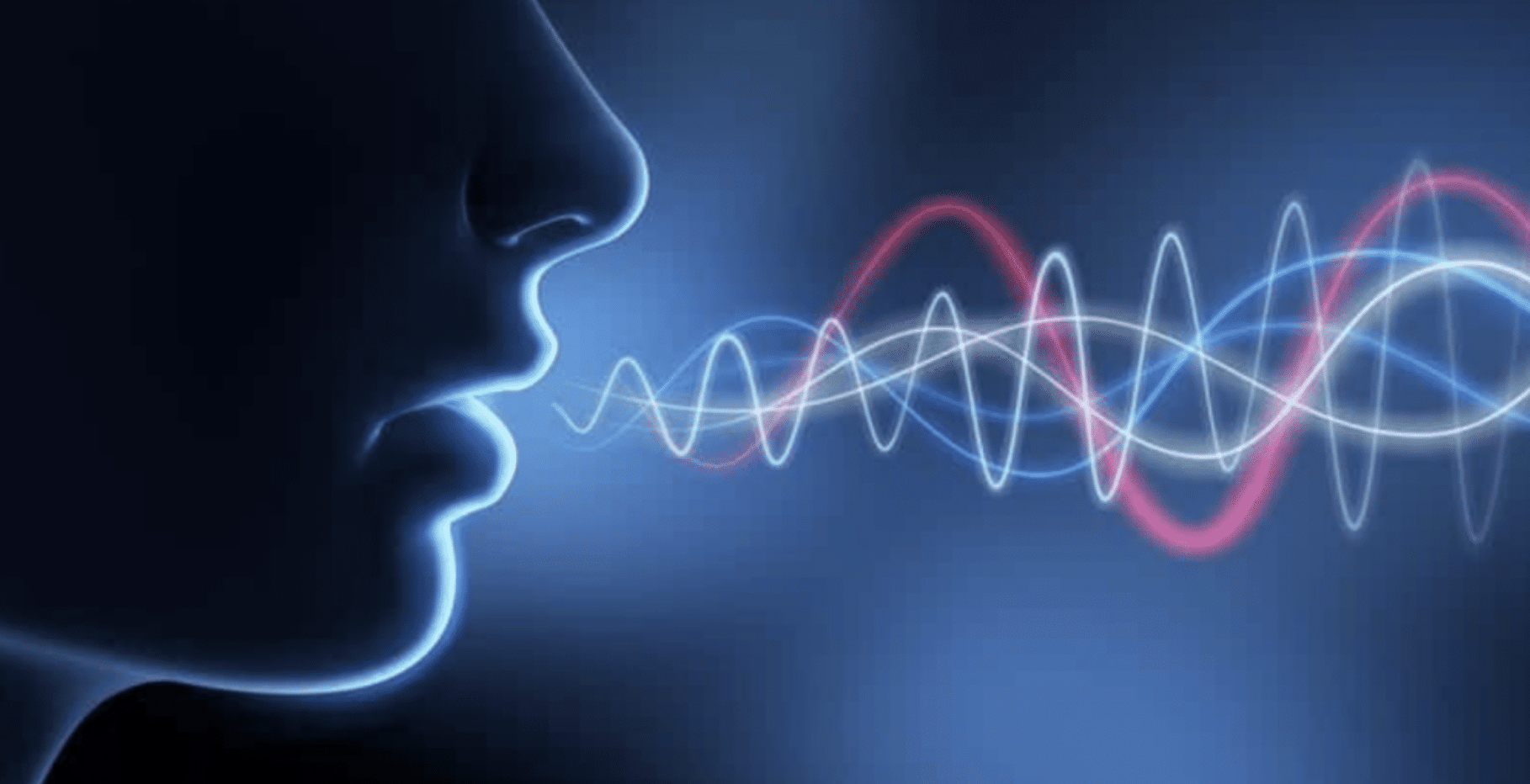
The human voice is arguably the most intricate instrument, possessing unmatched timbral richness.
Each singing voice carries its distinct timbral fingerprint, shaped by physical characteristics, vocal techniques, and emotional expression.
Certain factors are considered when producing a singer’s unique timbre, like:
- Vocal cord thickness
- The shape of the vocal tract
- Personal singing technique
This is why two singers can deliver the same note with the same frequency, yet sound extremely different.
In genres like hip-hop, where the voice is often front and center, understanding the timbre of the voice (be it a lead vocal, a sample, or background choir voices) is vital.
Manipulating the timbral properties of vocals can bring about very different emotional resonances in a track.
A voice can sound distant, close, ethereal, or grounded, all through timbral adjustments.
So, by knowing the science behind it, you can produce these desirable sounds with precision and professionalism.
Side note, if you’re looking for the best vocal samples of 2023 (with tips), we’ve got you covered.
Mastering Timbre as a Digital Music Producer
The world of digital music production is vast, and timbre is one of its most powerful tools.
For this final section, let’s dive into how you can harness timbre meaning to craft unforgettable tracks.
-
Manipulating Timbre in DAWs (Digital Audio Workstations)
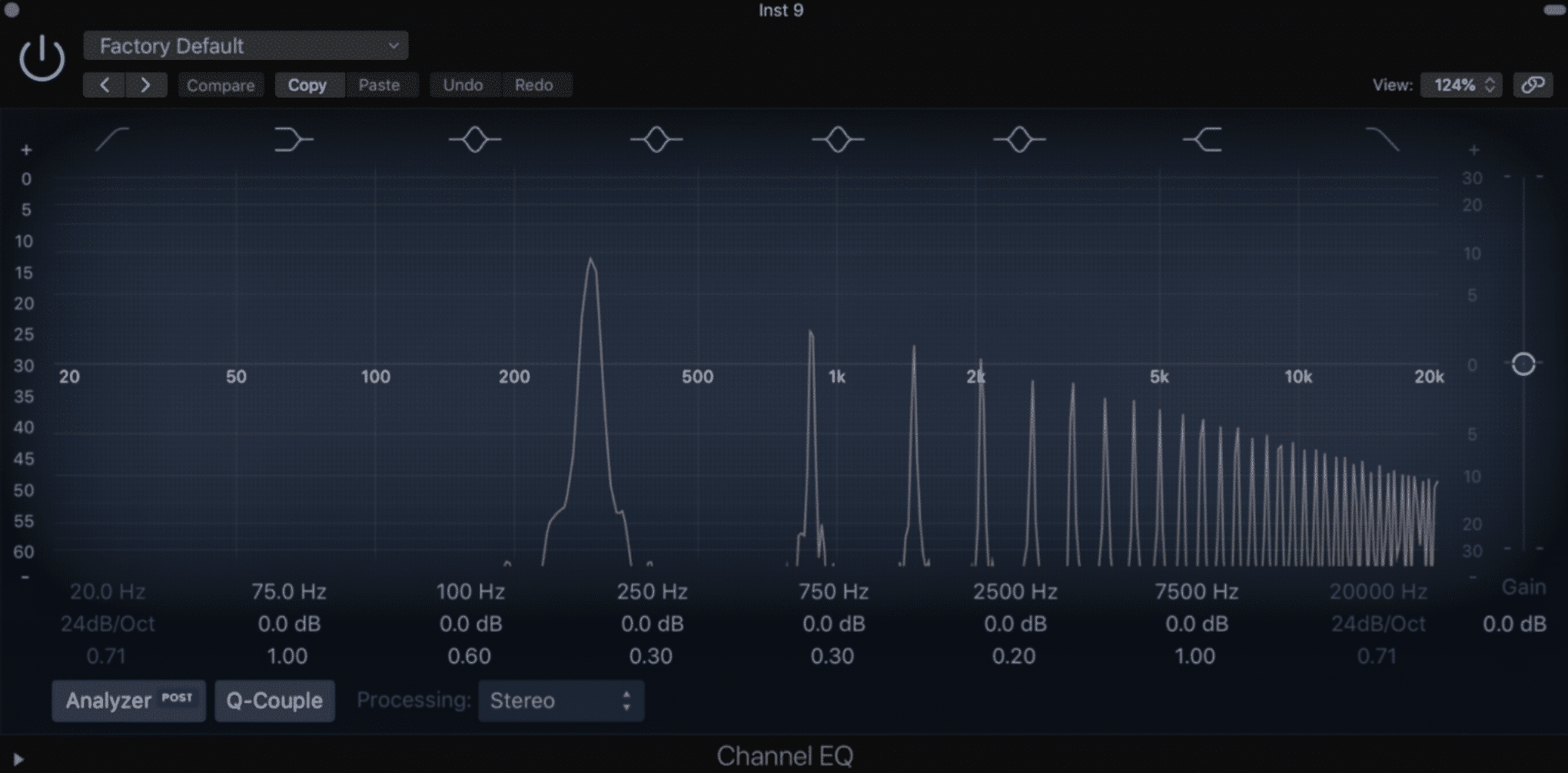
DAWs are the playgrounds for digital music producers like yourself.
They come packed with tools and plugins designed to shape and refine sound, giving you a direct line to manipulate timbre.
EQs, for example, are fundamental tools that allow you to boost or cut frequencies.
By emphasizing or de-emphasizing certain frequencies, you directly alter a musical instrument or voice’s timbre.
Synthesizers, on the other hand, generate sound from scratch.
You can shape the fundamental frequency, overtones, and harmonics to sculpt a sound with a desired timbre.
Synths are crucial in creating those iconic deep basslines and ethereal pads.
Effects like reverb, delay, and distortion can add depth, space, or grit ─ further diversifying the timbral palette at a producer’s disposal.
Being able to manipulate timbre efficiently will help your tracks shine and integrate rare, addicting musical factors.
-
Essential Timbre Tips for Crisp Musical Sound
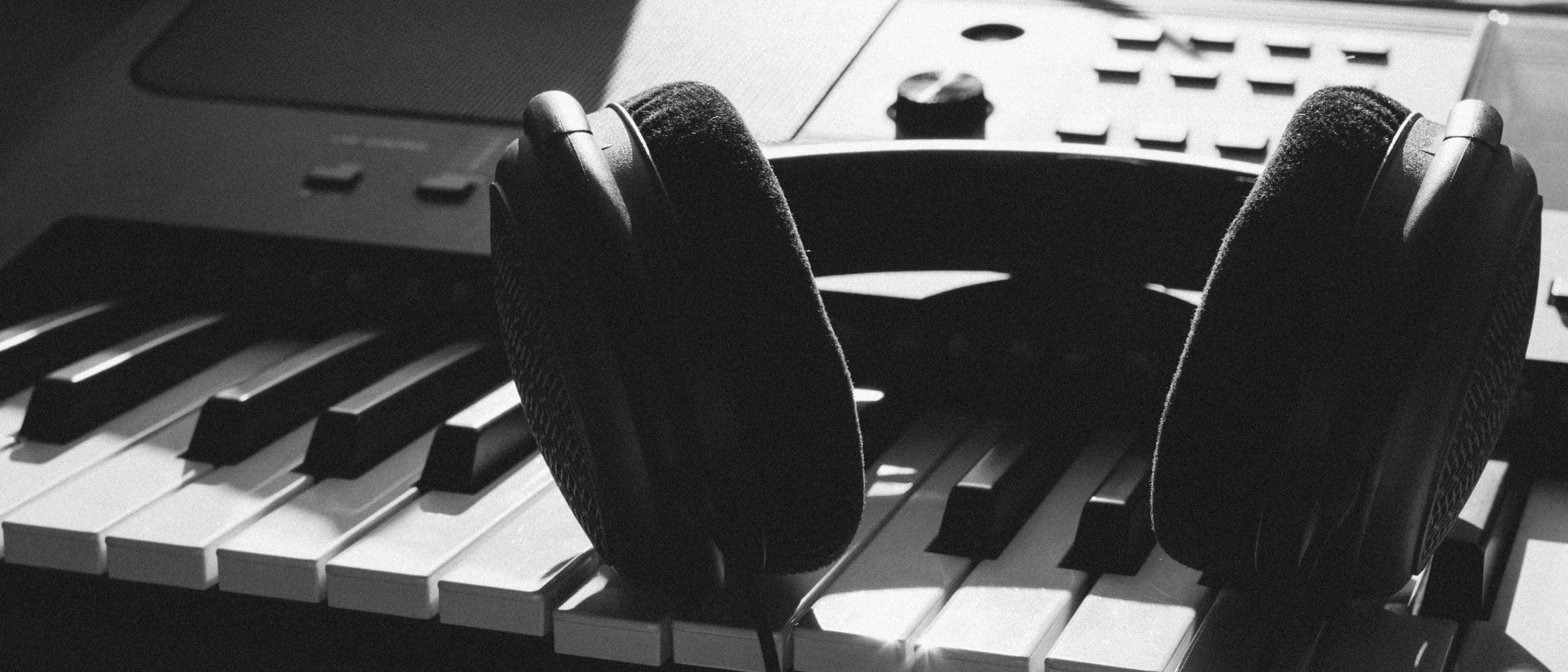
One of the key aspects of crafting a signature sound in hip-hop is the intelligent use of timbre.
A kick drum, for example, should not only be distinct, but blend seamlessly with the bassline.
This requires careful timbral matching.
Hi-hats and snares can be made more interesting by altering their timbres through effects or layering with other sounds.
A snare with a metallic overtone can add an unexpected edge to a trap beat.
Samples, widely used in hip-hop, carry their timbral qualities.
You can easily tweak samples using tools like filters to make them fit into a new track seamlessly and effortlessly.
Just remember never to underestimate the power of space.
Sometimes, pulling back and allowing certain elements to breathe can showcase their timbre more effectively ─ it’s all about balance.
-
Bonus: The Balance Between Melody, Tone, and Timbre
Balancing melody, tone, and timbre is a nuanced process that you’ll need to know (and master) to produce legendary songs.
#1. Melody
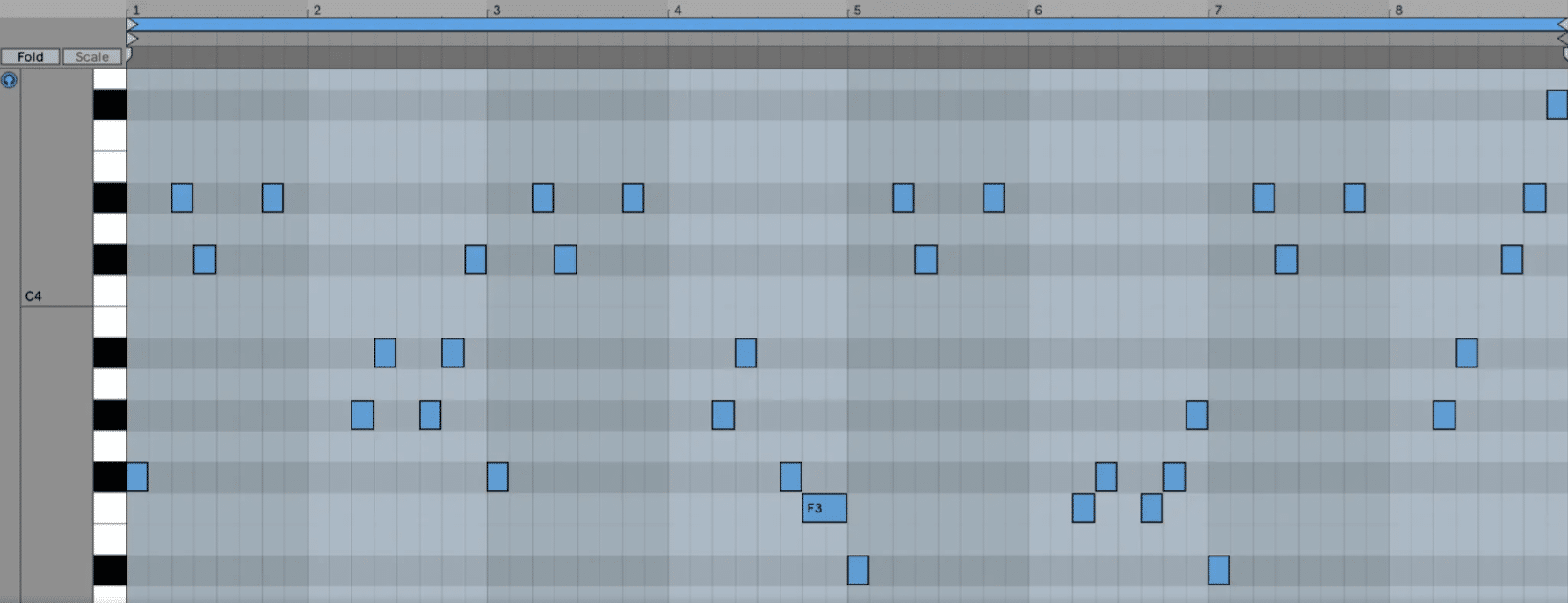
A melody is the sequence of musical notes that listeners often hum or sing along to.
It’s the backbone of any track and the primary carrier of a song’s theme.
In digital hip-hop and trap production, melodies often define the mood, whether it’s a haunting piano sequence or a lively synth riff, the melody sets the stage.
#2. Tones
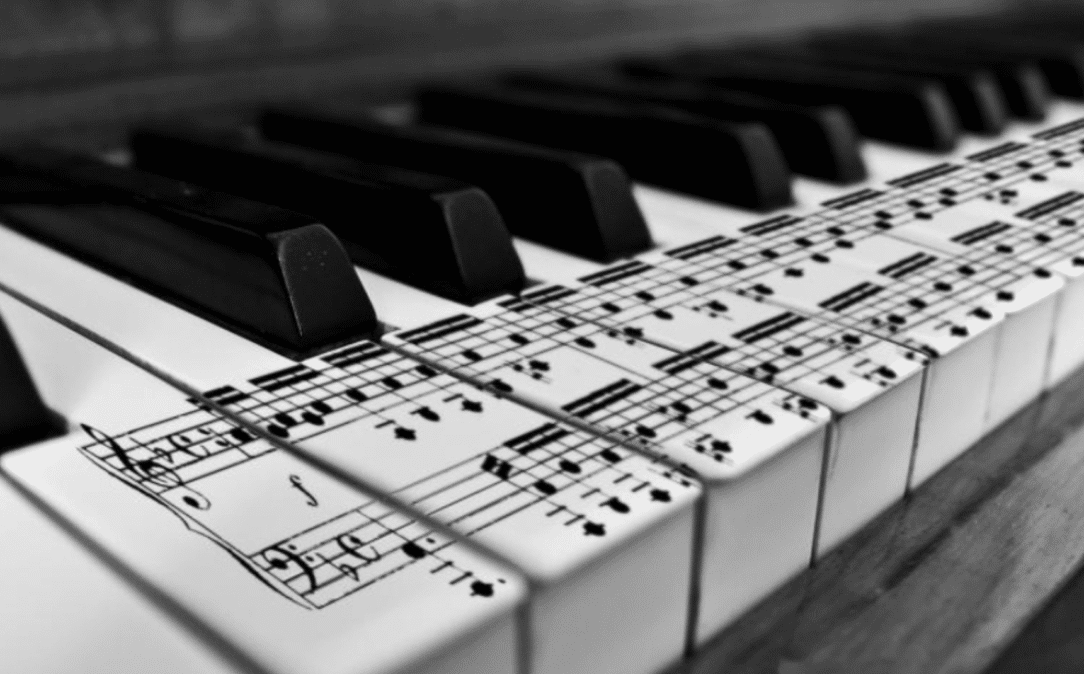
Tones are the character or quality of a musical sound.
It’s the distinct sound you hear when the same note is played across different instruments.
The tone of a musical instrument or voice is shaped by its unique blend of frequencies.
In the digital realm, think of tone as the preset sound of a synth or the natural sound of a musical instrument sample before any modifications.
#3. Timbre
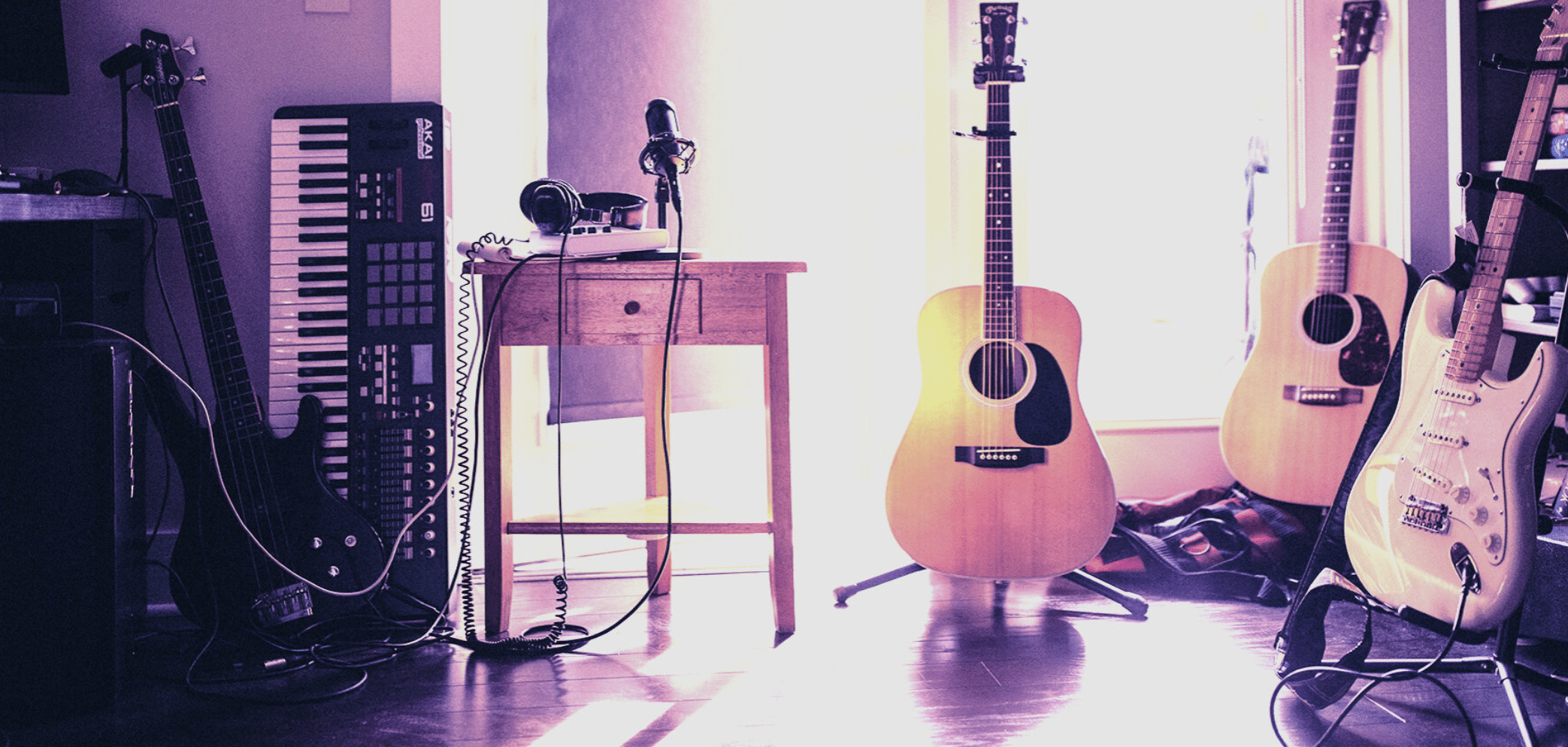
While tone gives a sound its basic character, timbre adds depth, making it recognizable.
It’s why a note played on a guitar sounds different than when played on a piano, even if the tone (or basic pitch) is the same.
The timbre is influenced by numerous factors, such as:
- The instrument’s physical characteristics
- Playing techniques
- In the digital world; processing and effects
Balancing these three crucial elements is where the true magic happens.
Imagine a melody with a well-chosen tone that perfectly fits the track’s intended mood.
By adjusting the timbre, you can blend that melody smoothly with the rest of the mix or stand out prominently ─ catching the listener’s ear.
For instance, in a trap beat, the melody might be a haunting flute, while the tone determines the flute’s basic sound quality.
By adjusting the timbre (adding reverb, changing the attack, or modifying the EQ), you can decide whether the flute should feel distant, close, ethereal, or sharp.
Understanding the balance between melody, tone, and timbre is the key to producing professional, emotionally captivating tracks.
Timbre Meaning: Final Thoughts
As we’ve delved deep into the timbre meaning, it’s abundantly clear how crucial it is to the essence of music.
Manipulating timbre isn’t just about altering a sound’s character; it’s an avenue for creating a sonic identity, a unique musical signature that sets you apart.
Some of the most intriguing methods to play with timbre involve modifying harmonic content, tweaking overtone structures, or even adjusting the decay and sustain of sounds.
This helps to achieve that perfect sonic texture people love.
Yet, for many producers, especially those who dabble in synthesis, the challenge has always been finding the right tools to manipulate timbre efficiently.
This is where the legendary Free Serum Essentials pack steps into the limelight.
It’s the ultimate collection of the most clean, polished, and professional Serum presets spanning various genres.
Each unique preset isn’t just a static sound ─ they’re dynamic canvases.
Fully loaded with macros and flexible parameters, they empower you to tweak, customize, and redefine the timbre meaning of each sound to match your vision.
In Serum, not only can you alter the pitch, but the timbre as well.
The journey to understanding the full timbre meaning can seem daunting.
However, with tools like Serum, the Free Serum Essentials pack, and this very blog, you’re equipped to experiment and witness the magic of timbre meaning in its entirety.
As you further your production journey, never underestimate the power of timbre again.
And remember, every time you question “timbre meaning,” turn to your tools, explore, and let your creativity soar.
Until next time…







Leave a Reply
You must belogged in to post a comment.